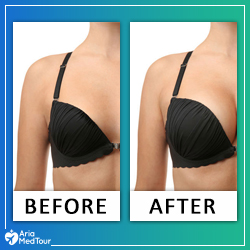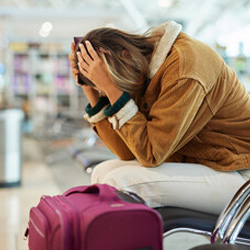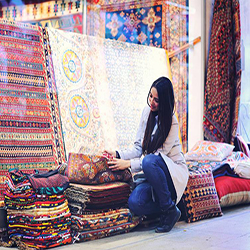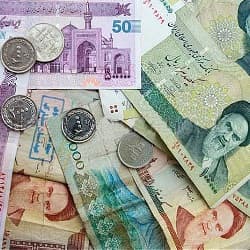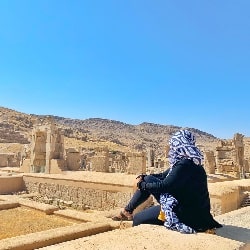Many foreign females planning to travel to Iran might wonder what it would be like to dress in a country that is said to have a strict dress code or the so-called ‘compulsory hijab’ law. Hearing the term ‘compulsory hijab,’ many people with little knowledge of Iran rush to think of women fully-covered with chadors, burqas, and niqabs. This comes from the same misconception that once the Israeli prime minister Netanyahu simple-mindedly made that huge gaffe—among many others—that Iranian people are not allowed to wear jeans!
These people also often compare Iran with Saudi Arabia in terms of dress code, where most women are shrouded in black abayas with full-face veils, and assume that female travelers to Iran have to dress in a similar way. But this is far from true.
Well, a picture is worth a thousand words. A cursory glance at the images below will tell the whole story. As you see, the way many local women dress in public places proves wrong the dominant idea that women are under heavy restrictions in terms of their choice of dress.
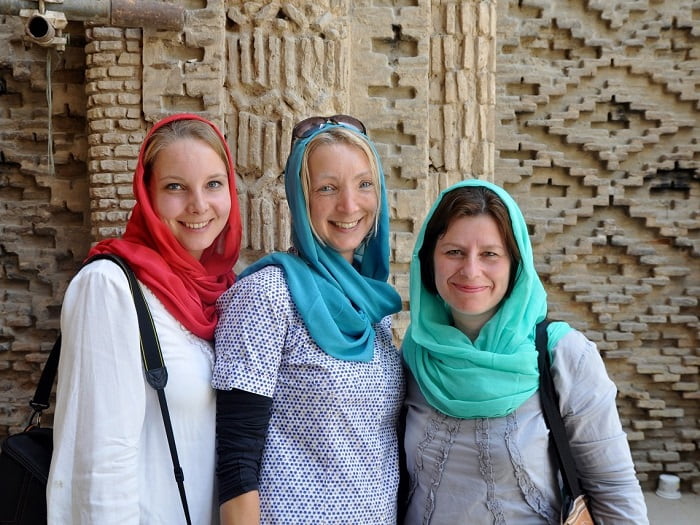
A typical photo of how female travelers normally dress in Iran.

Female travellers are not required to fully cover their heads in private places. In this photo, for example, AriaMedTour’s plastic surgery patient (from Australia) is not wearing a headscarf in a doctor’s office in Tehran.
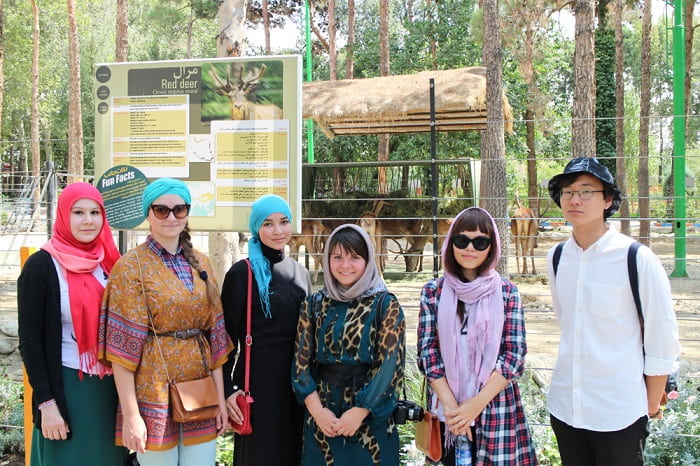
A group of Asian tourists visiting Iran posing for a photo at an animal park.

AriaMedTour’s Italian tourists visiting Milad Tower in Tehran.
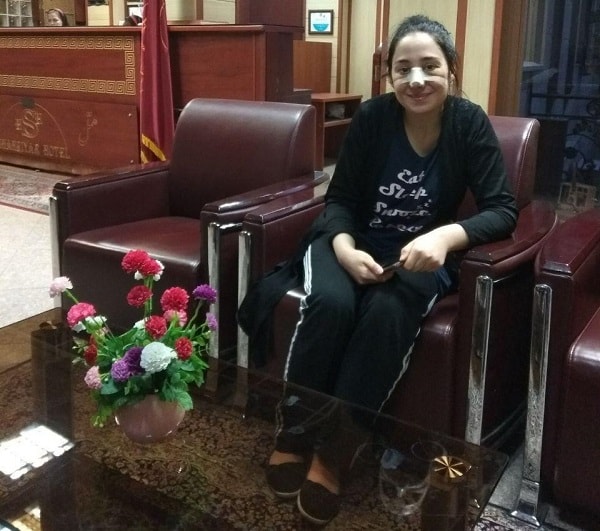
AriaMedTour’s foreign rhinoplasty patient sitting in the lobby of her hotel in casual clothes. The dress code for female tourists is much laxer in private places and is not strictly enforced
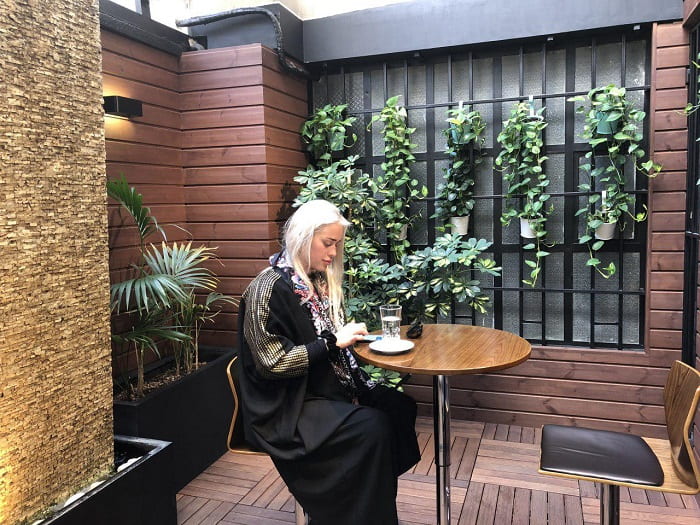
AriaMedTour’s rhinoplasty patient Cecilia sitting in a private clinic’s terrace in Tehran.
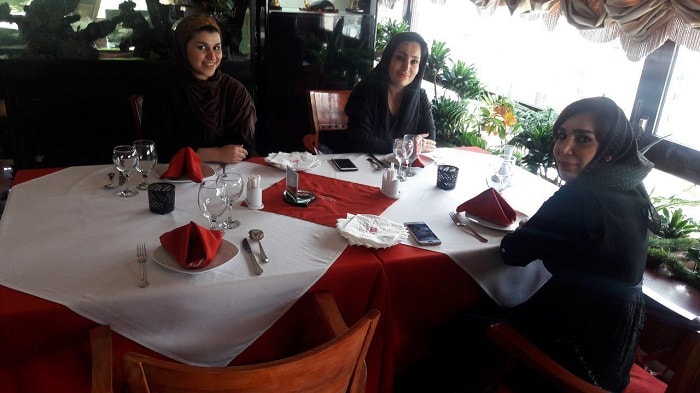
AriaMedTour’s plastic surgery patients (right and center) and the company’s tour guide posing for a photo at a restaurant in Tehran.
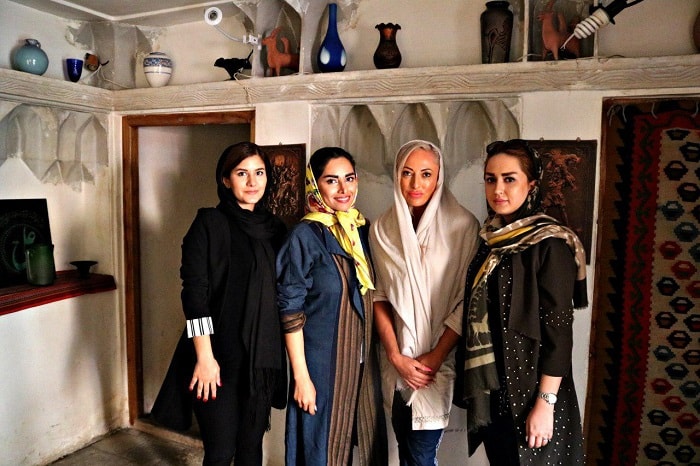
AriaMedTour’s plastic surgery patient Abigail (2nd right) and company’s staff members posing for a photo at a historical place in Tehran.

A group of foreign tourists posing for a photo at a tourist attraction in Iran.
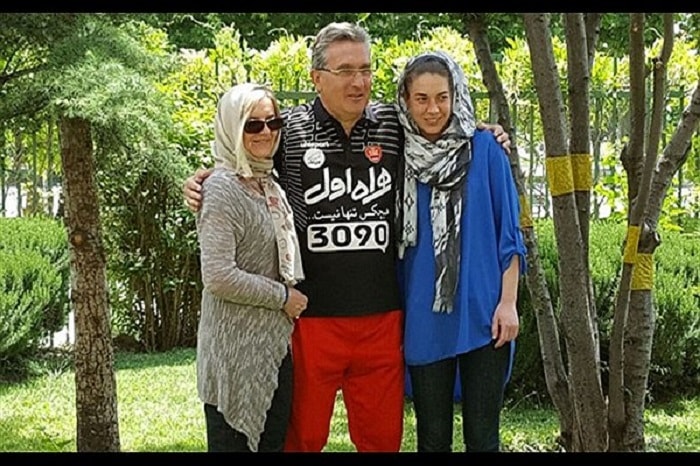
Croatian football coach Branko Ivankovic posing for a photo with his wife and daughter in Iran. Ivankovic is the manager of the Iranian football club Persepolis.
WHAT TO WEAR IN IRAN AS A FEMALE TRAVELER?
A headscarf is the most important piece of clothing you should consider as a female traveling to Iran, something that you might find a hassle wearing it. But many people get used to it very quickly. A headscarf is supposed to partially cover your head and your neck.
Although the dress code in Iran obliges women to wear a headscarf, the fact is that the scarf does not need to cover the entire head. In practice, a loosely-fitting piece of clothing for the head is enough for women to conform to the dress regulations of the country.
As you can see in the photos, many Iranian locals wear their headscarves loosely and far back on the head, with the front part of the hair completely visible. For a woman not used to wearing headscarves or shawls, keeping them in place on the head is a little bit annoying; we recommend that you fasten your headscarf with hairgrips to eliminate the hassle of constantly rearranging it.
What about body and legs?
A basic rule is that what you wear on your upper body should be long enough to reach your knees, or slightly above them. You are allowed to wear trousers or jeans that cover all your legs down to the ankles. Even tight leggings are ok as long as your dress, tunic, or ‘manteau’ covers you up at least down to the mid-thighs. (Manteau is a French word meaning a gown or cloak, now widely used in Iran to refer to a series of closely related outfits in various styles worn by females.)
Your arms are supposed to be covered down to the forearms, so wearing short-sleeve clothes are not permitted. The more loose-fitting the clothes the better, for both you will be more comfortable in them especially if you want to visit some places in town, and you can rest assured that you would fully conform to the laws and norms of the county.

‘Manteau’ is a type of outdoor clothing many Iranian women wear.
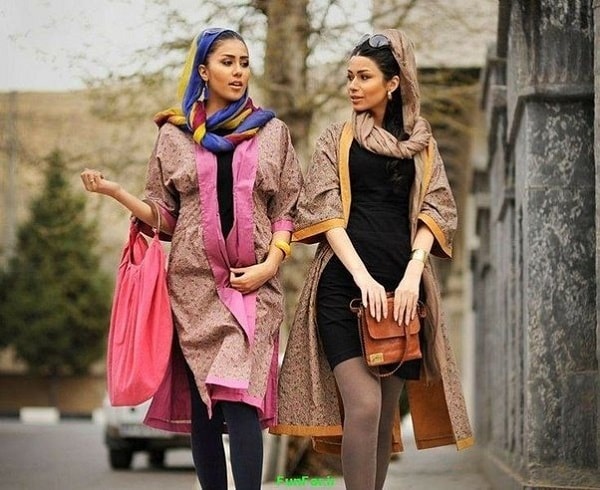
Two Iranian female youths dressed in trendy clothes walking down a street in Iran.
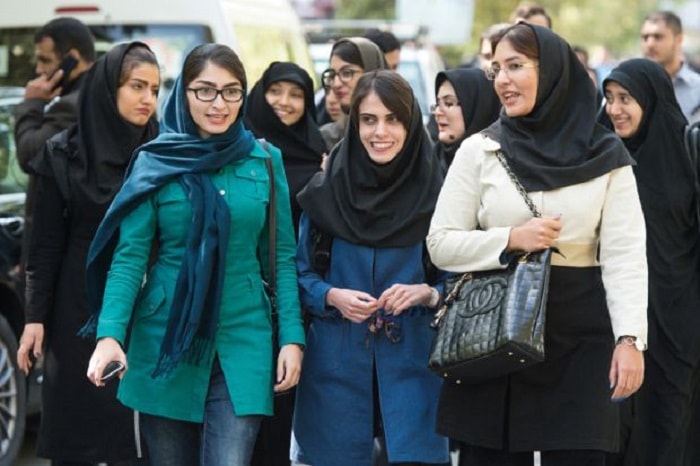
Three Iranian women in ‘manteaus’ talking and walking down a street with women in chadors seen in the background.
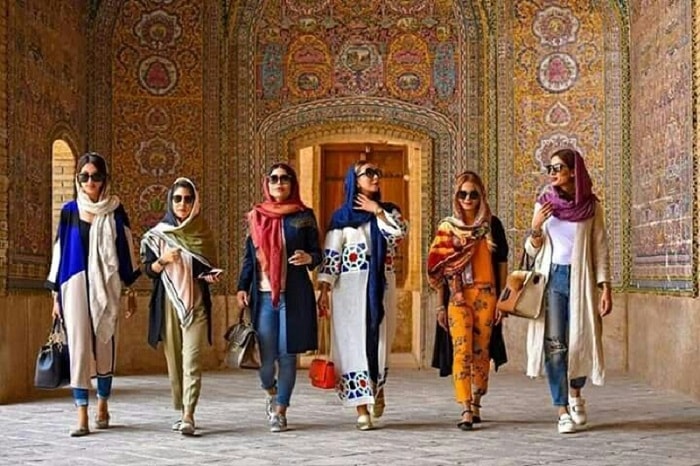
A typical photo of the preferred manner of dressing among non-conservative Iranian women keeping up with the latest dress fashion.
DRESS CODE FOR MEN
The dress law for men is much less harsh. Just avoid wearing shorts and sleeveless vests. T-shirts and jeans are common among the local males—forget about Netanyahu’s fiasco.
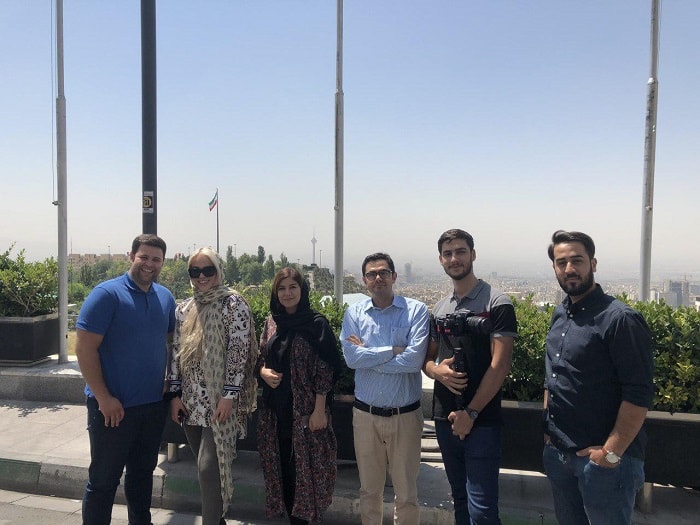
AriaMedTour’s rhinoplasty patient Cecilia (2nd left) posing for a photo along with AriaMedTour’s staff members in Tehran.
LAST WORD
As a female tourist, you will never get arrested in Iran for your clothes if you follow some simple rules. In the worst case scenario, you might get a warning by a police officer or a polite request by a religious cleric to ‘observe your hijab,’ which still do not often happen in big cities like Tehran,Isfahan, Shiraz, etc. Of course, you should be more mindful of your way of dressing in religious cities like Mashhad and Qom, as well as more conservative regions like the south of the country.
Also, take a look at this link to read a guide for female travelers to Iran written by Czech tourist Veronika.


